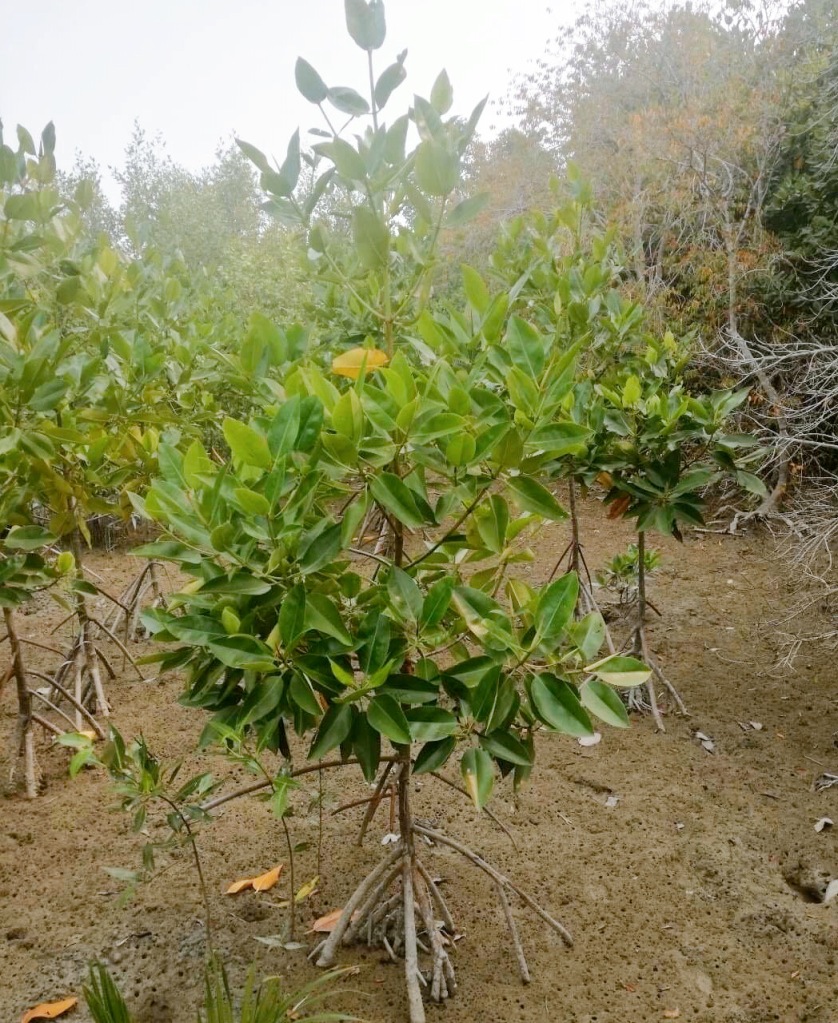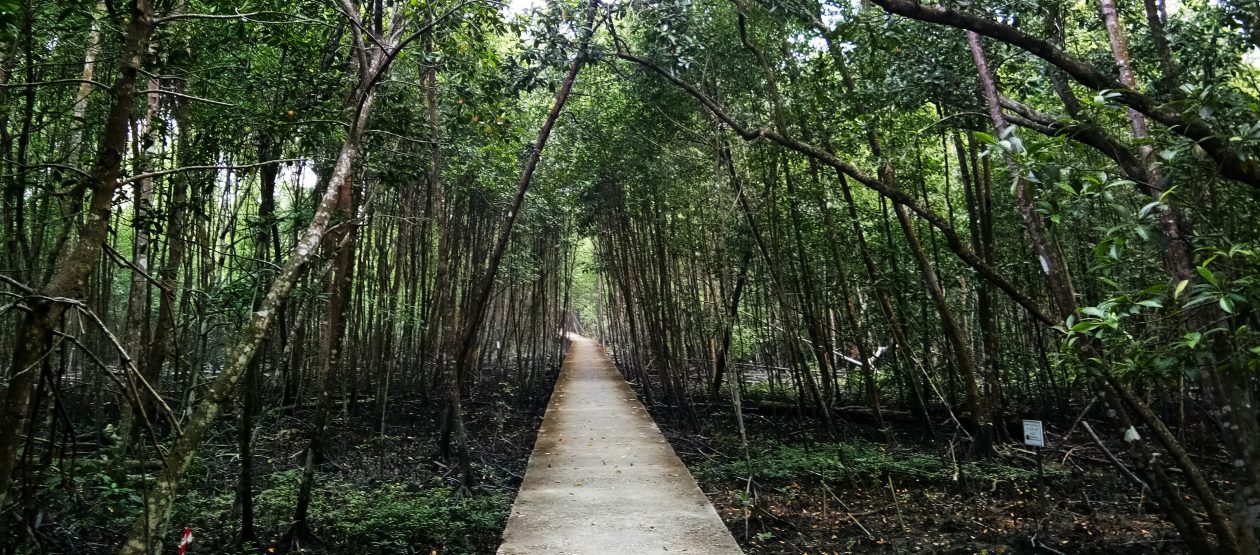CLICK BELOW FOR AUDIO GUIDE
Rhizophora apiculata is a nationally common mangrove plant of the genus Rhizophora belonging to the family Rhizophoraceae. Locals often call it as bakau minyak because its roots look oily when it is moist and contact with water. Rhizophora apiculata Blume is one of the most important species in mangrove forest. This species is widespread and often can be found in most mangrove swamps.
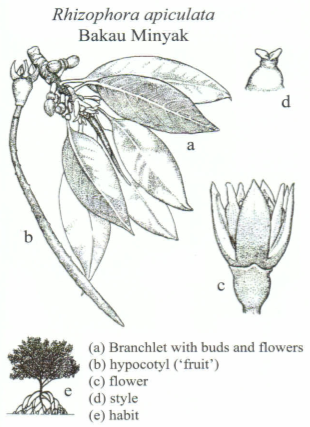
It is a medium-sized tree that can grow up to 30m tall and with the trunk up to 75cm in diameter. The bark is smooth and grey with shallow vertical furrows and small breathing pores. Its stem is supported by numerous branched stilt roots and the roots can extend 6m up the stem.
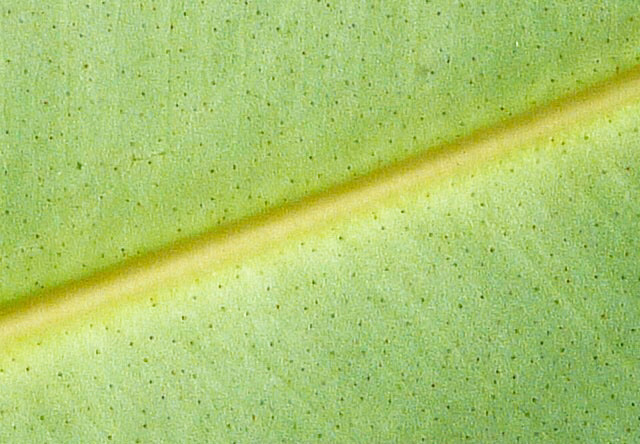
It has leathery leaves that are narrowly elliptic with pointed tips and the stipule is often tinged red. Moreover, the bottom surface of the leaves is yellowish green and tiny black spots can be seen on the underside of the leaf blades. Its flowers are creamy white in colour and the bract is brown, hard and thick. Meanwhile, the fruit is brown or olive coloured and it has an ovoid or upside-down pear-shaped. The hypocotyl is cylindrical to club-shaped, smooth and shining with somewhat rounded tip.
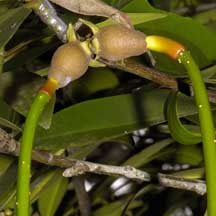
The fruit is occasionally eaten even though it is bitter in taste. It is prepared by first boiling it, then adding wood ashes in order to neutralize the bitterness. The fruit is then baked and eaten. On top of that, the ripened fruits have been consumed by mangrove society in Indonesia. So, it simply means that the juicy fruit can be cooked and eaten raw as well as the juice can be extracted to make wine. On the other hand, the young shoots can also be consumed as a vegetable.
Besides, the bark extract is being used as antiseptic and curing diseases such as diarrhea, nausea, malaria, fungal infections and so on. In India, the bark is used to treat diabetes. Furthermore, since the bark is rich in tannin, therefore it is used for tanning leather and to toughen and dye fishing lines, ropes and nets. Apart from that, its leaves are also prescribed for fever and old leaves are being used as the decoction at childbirth.
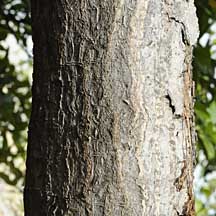
Next, since the wood is hard and heavy, thus it is widely used for heavy constructions, foundations in piling, beams and the outriggers of dugout canoes as well as furniture and interiors of houses. Moreover, the wood is also used for foundations of bridges and wharves as it is durable in water and under-ground. In addition, as the wood can be split easily and has a high energy value, hence it is highly suitable for producing good quality charcoal and firewood.
